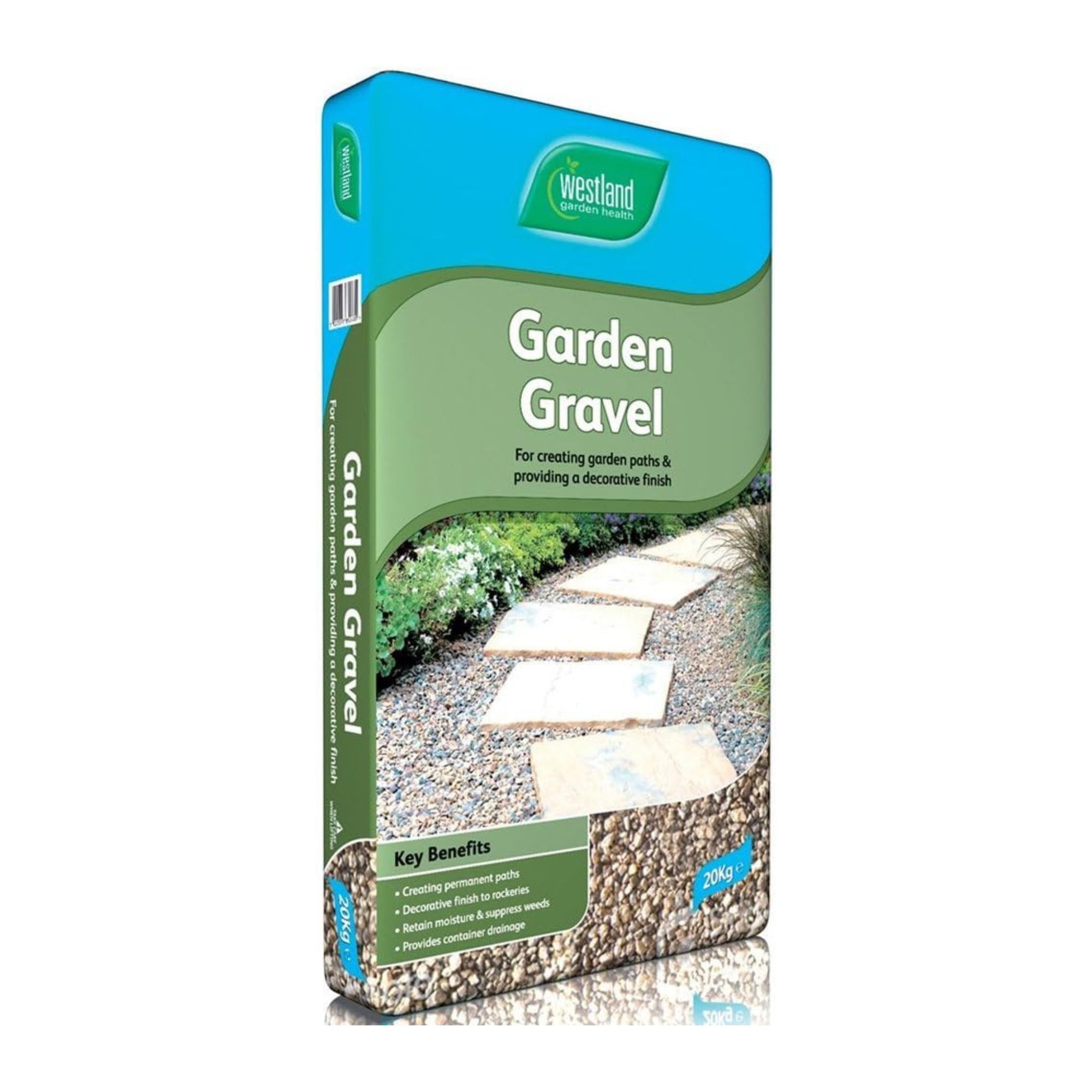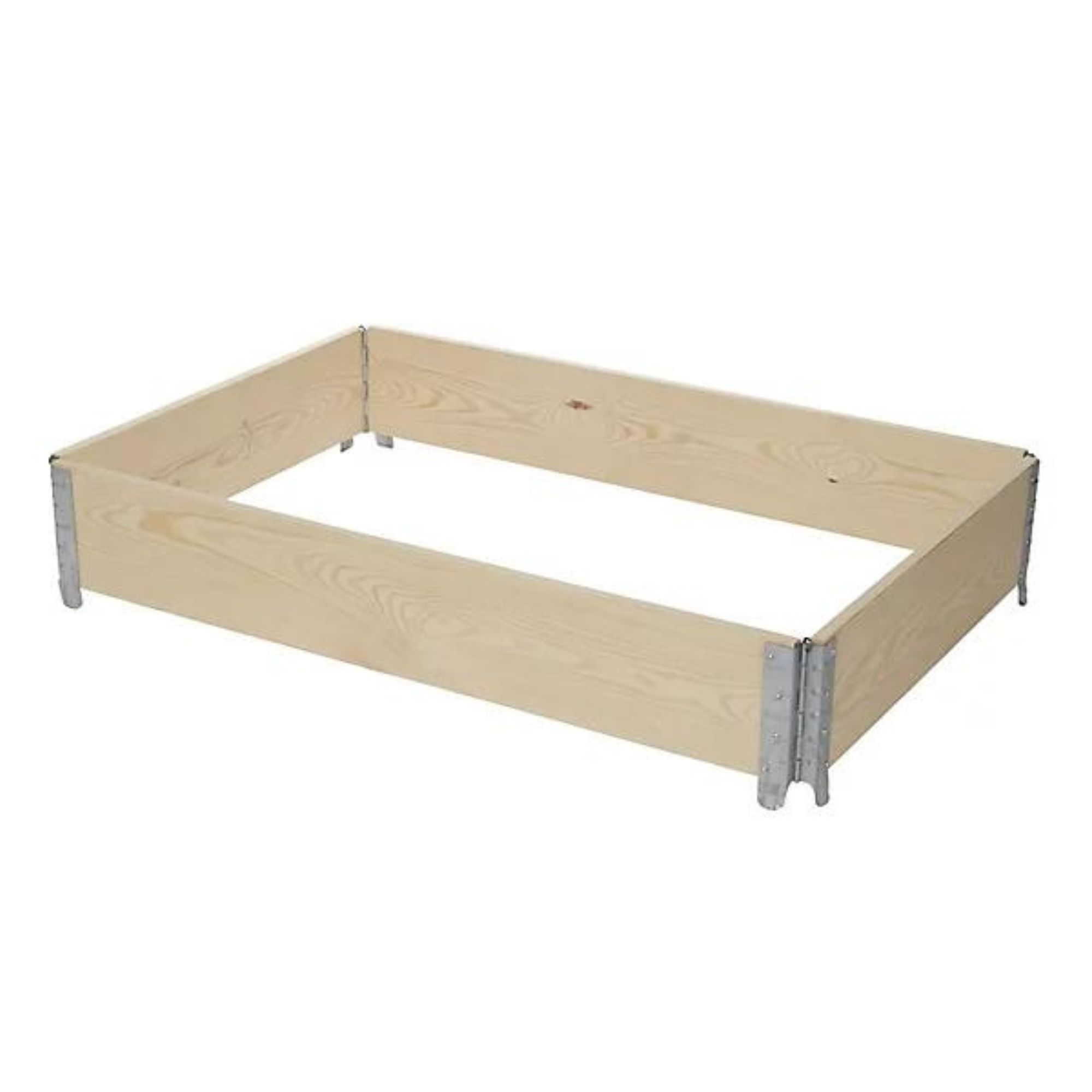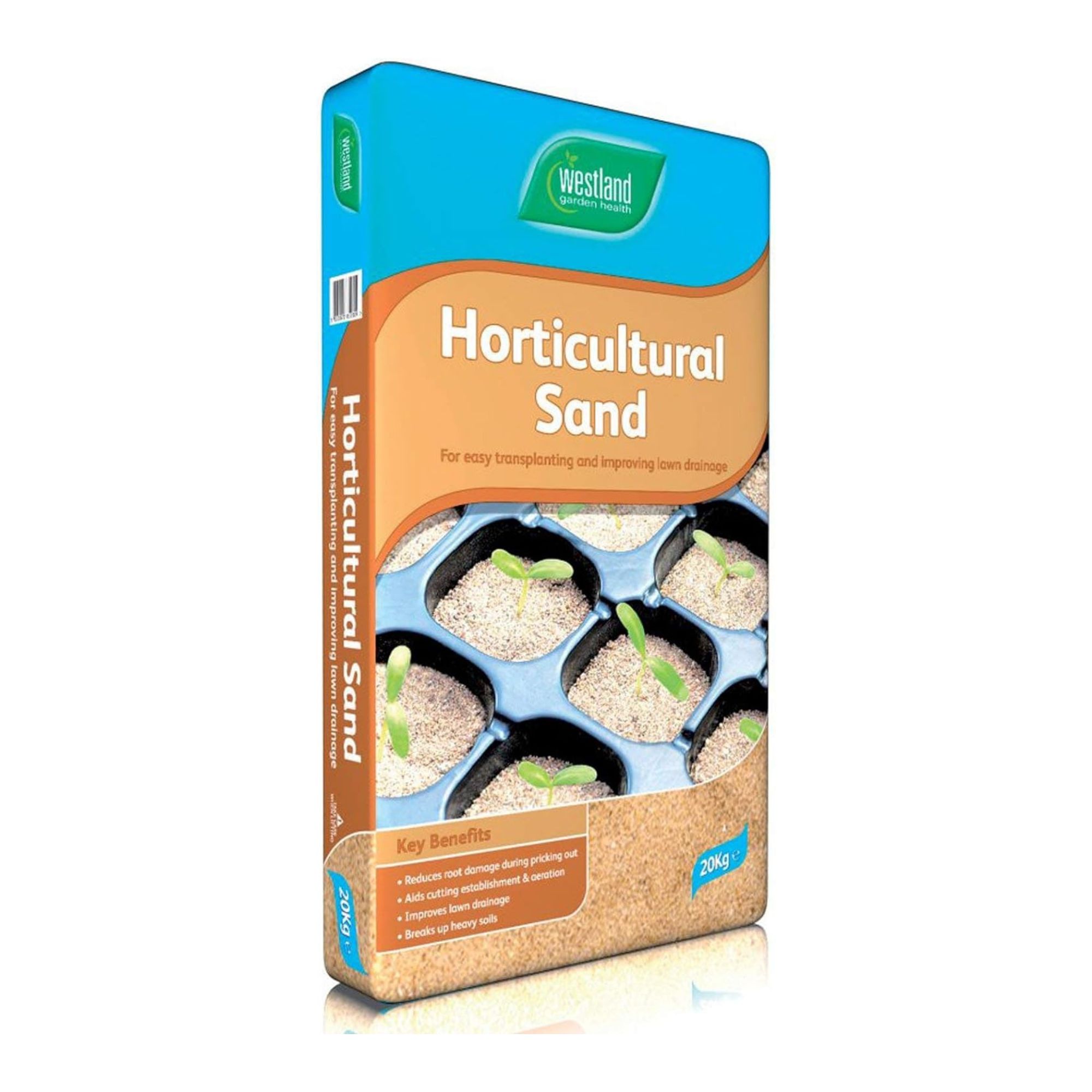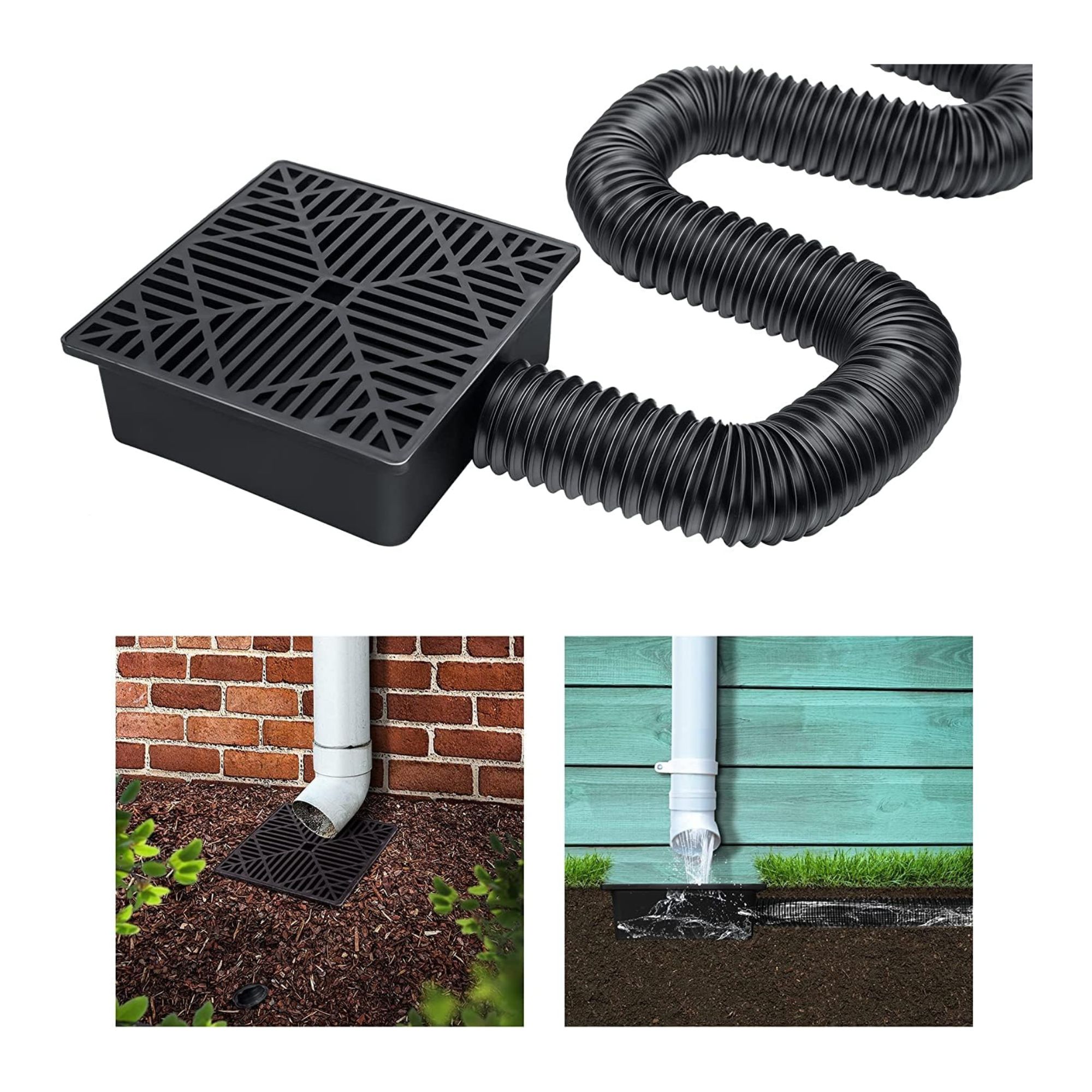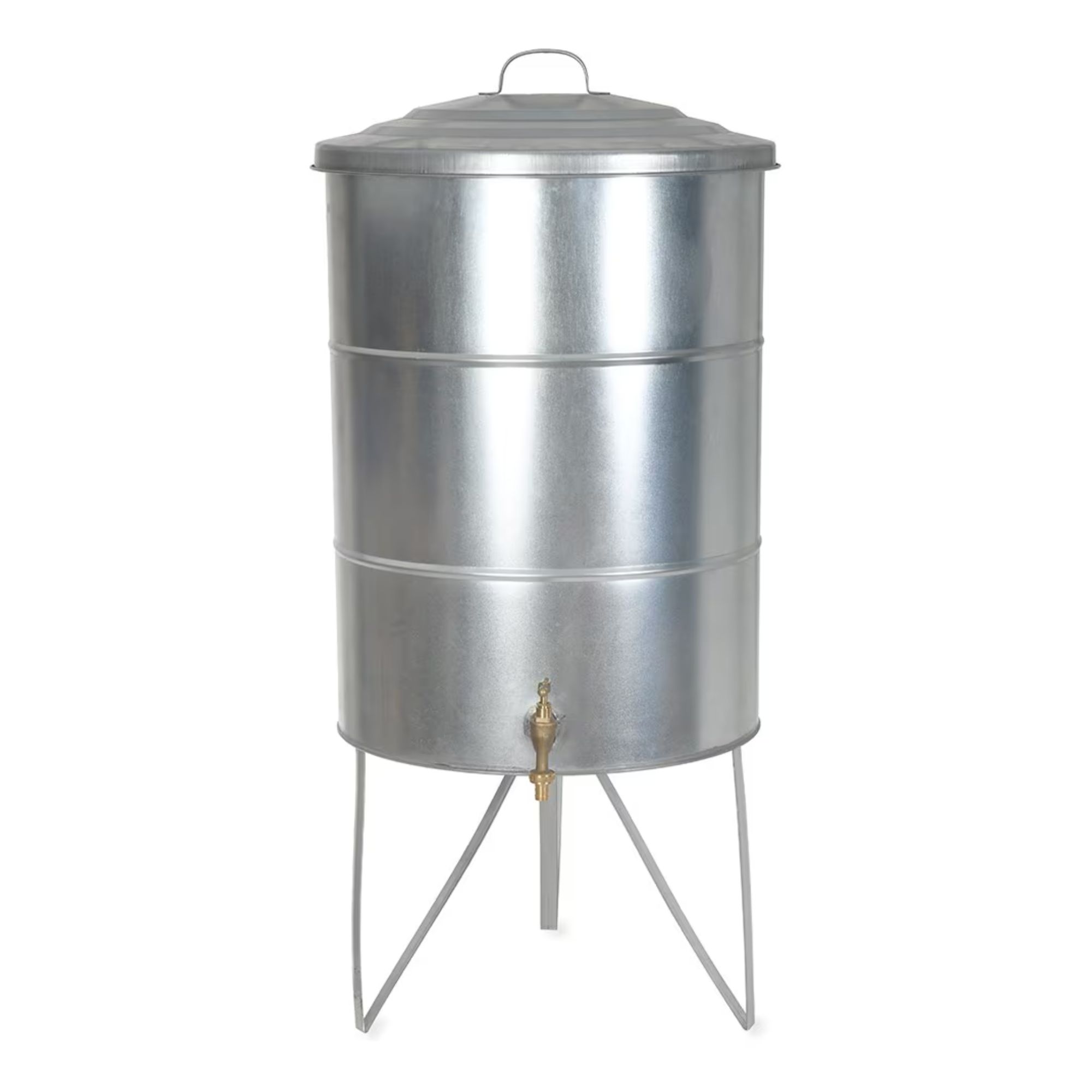How to flood-proof your garden - 6 ways to protect it from what experts predict will be one of the wettest summers on record
Don’t let your garden suffer this summer
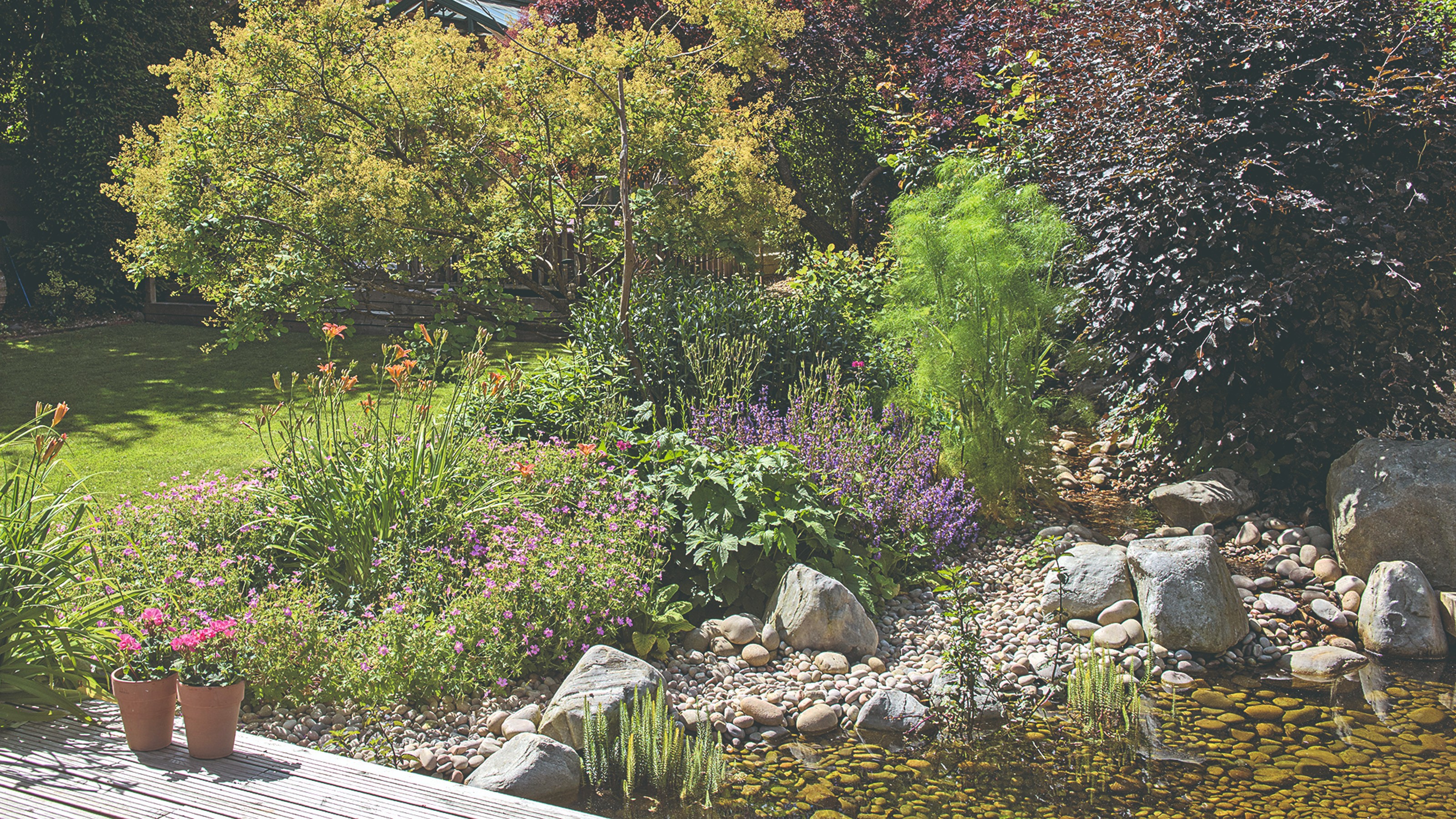

With the UK set to have one of the wettest (and coldest) summers in decades, our dreams of sunny days in the garden will be few and far between. And with rain on the horizon, knowing how to flood-proof your garden can seriously minimise damage.
After all, even the best garden ideas can be ruined by waterlogged soil, pooling surface water, and over-watered plants. That’s why more and more Brits are choosing to look at flood-proofing their house, as well as it's surrounding areas - especially with this wet weather set to worsen in the coming years.
As Melanie Hick, leader of bespoke landscape and garden design firm Melanie Hick Garden Design (MHGD), explains, ‘Climate change is having a huge impact on gardens not just in the UK. Extreme weather conditions like sudden, heavy downpours and periods of drought are influencing the decisions we make when it comes to designing our outdoor spaces.’ And if you want to flood-proof your garden, here are some tips.
1. Switch up your surfaces

While the best patio ideas and the best decking ideas can bring a certain je ne sais quoi to your garden, these surfaces aren’t the best for heavy rain and flooding. In fact, they can worsen the situation as they do nothing to absorb or stop the water flow.
So, to successfully flood-proof your garden, you might want to change your surfaces and choose different, flood-friendly materials.
Ted Bromley-Hall from drainage manufacturer IBRAN, says, ‘There are a couple of easy choices that can be made for different parts of the garden. Slabbed patios, for example, can be swapped for colourful gravel. Interlock the gravel with gravel retaining grids, and the surface will feel like a conventional, solid patio surface but with the added benefit of being 100% permeable.’
However, gravel isn’t your only option. In recent years, resin-bound surfaces have become a popular choice for gardens and driveways - and these can also help to flood-proof your garden.
Sign up to our newsletter for style inspiration, real homes, project and garden advice and shopping know-how
John Pearce, Director at Oltco, explains, ‘Resin-bound surfaces are porous, allowing water to drain through the surface rather than pooling on top. This permeability helps manage heavy rainfall by facilitating efficient water drainage, thereby reducing surface runoff and the risk of flooding.’
2. Choose the right plants
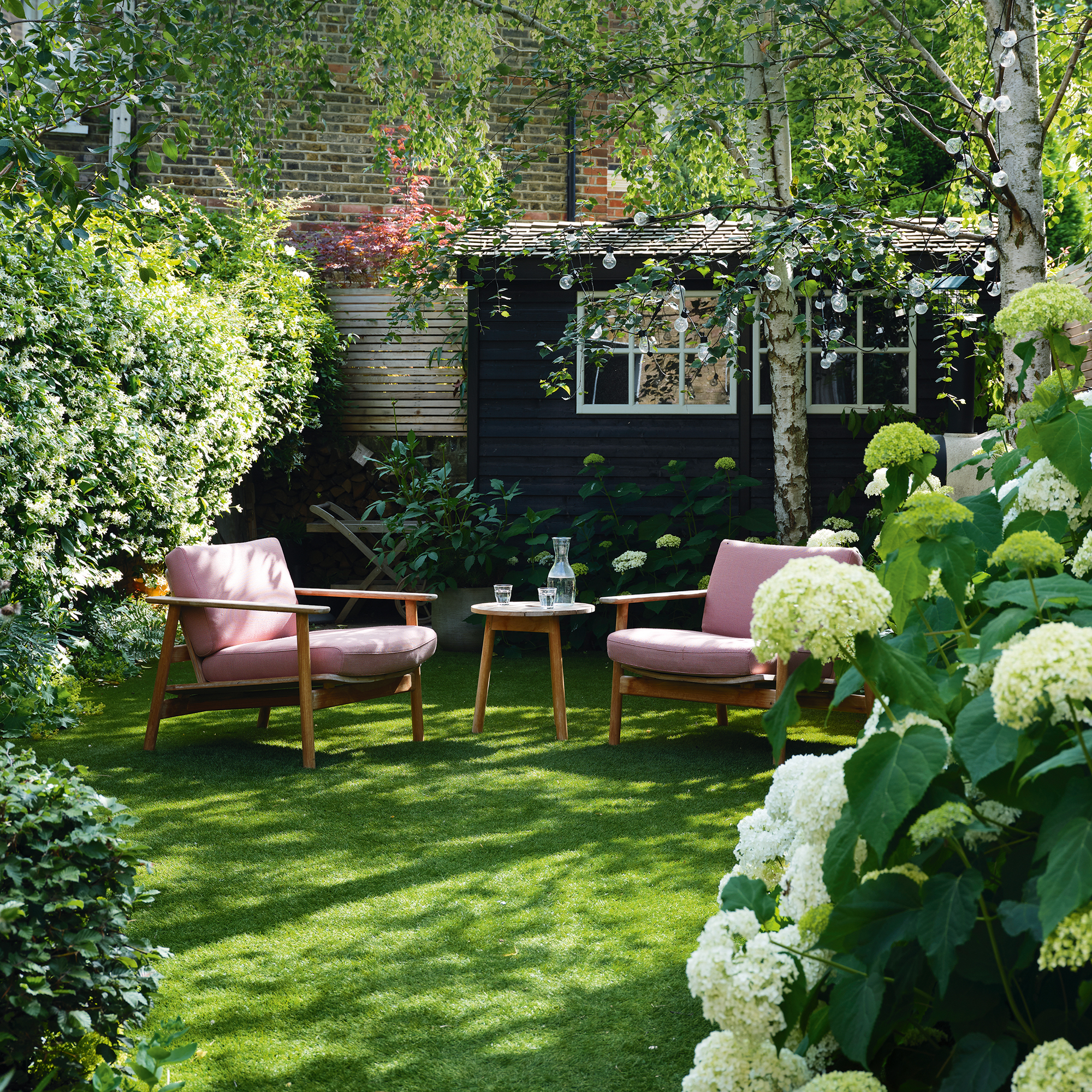
It’s safe to say that drought-tolerant plants won’t work in a flooded garden or even help to prevent flooding in the future. Instead, you must focus on plants that can cope with this extra moisture.
These plants will grow and thrive in waterlogged soil and help absorb excess moisture in a flooded garden. Many experts suggest densely planting these plants - which are largely luscious, evergreen shrubs - to prevent a consistent barrage of water descending on open, vulnerable garden space.
Gardening expert Naomi Slade, who designed the Flood Re: Flood Resilient Garden at RHS Chelsea 2024 in collaboration with Dr Ed Barsley, says, ‘The right plants to choose for a flood-resilient garden depends on a number of factors including soil type and the nature and duration of the flooding that you experience.’
‘Most plants will tolerate total immersion as long as it is brief and the water drains away quickly, but if the ground is boggy or stays wet for a long time, that is a different matter entirely. Willows, birches and alders will all put up with a fair amount of moisture, as will shrubs such as Amelanchier, Cornus alba ‘Sibirica’ and cultivars of Hydrangea macrophylla are useful.’
By utilising these plants, you can also add some visual intrigue to your garden while also utilising flood-proofing measures that will seriously help you out in the long run.
3. Mix up the levels
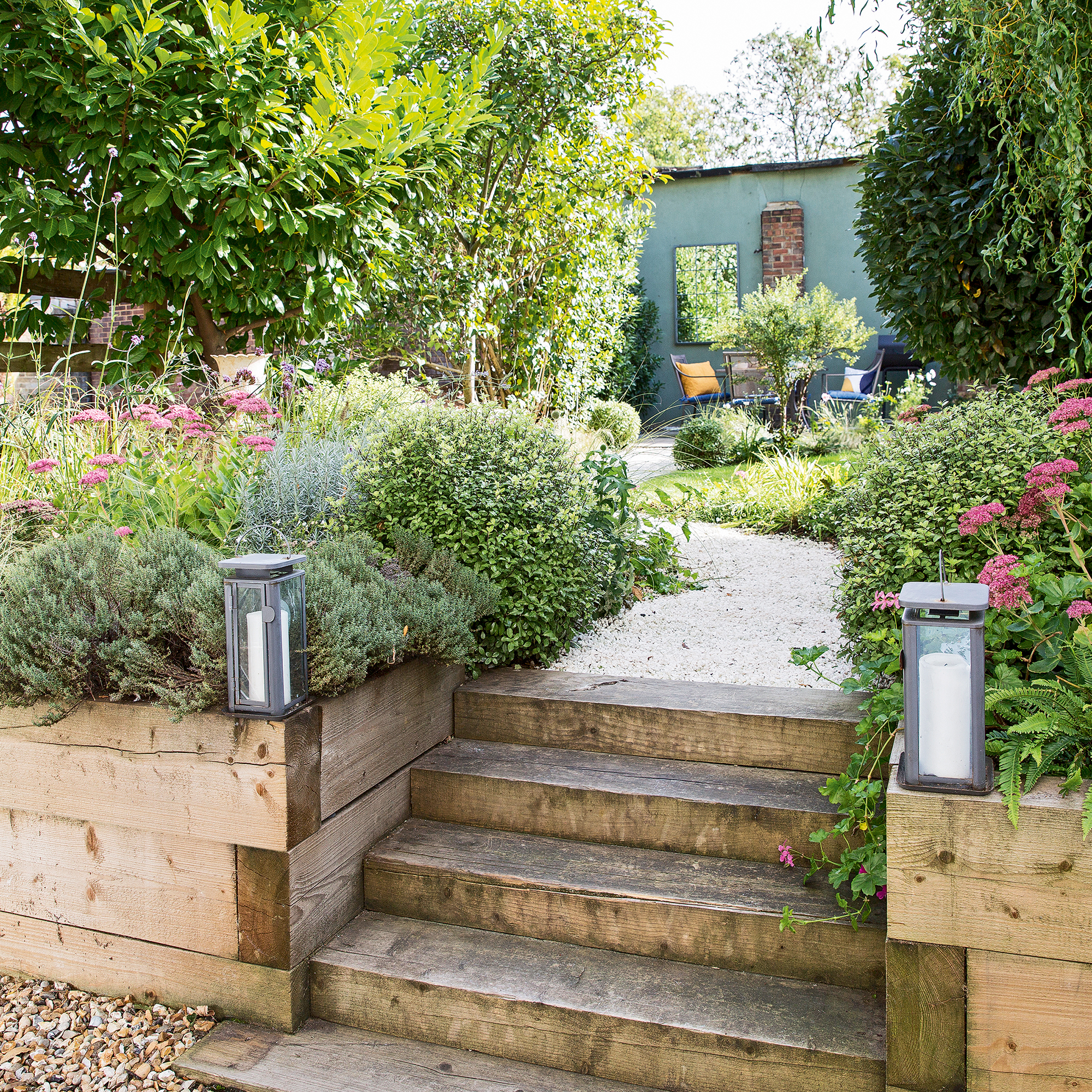
You’ll probably encounter flooding and drainage issues if you have a flat garden. But there’s a high chance you’d experience the same if you have a sloping garden, too. That's why mixing up the levels is best.
This is echoed by Naomi, who explains, ‘Where a garden is prone to flooding, a key tactic is to maximise height differences as the water will always run downhill, leaving some areas drier than others.’
‘A raised or mounded area can be created to accommodate plants that like good drainage, such as fruit trees, roses or lavender, while in a smaller space, a raised bed will do the same job of simply and easily lifting the roots out of the water.’
How you do this is totally up to you and your landscaping design, but we suggest adding raised garden beds throughout your garden. This will break up the water flow, add more surfaces for the water to be absorbed, and even allow you to plant different plants with different watering requirements.
Doing so can also improve soil quality in your garden, too. By filling your raised garden beds with organic matter and well-rotted compost, you can improve the soil structure to promote drainage and prevent flooding.
After all, Naomi says, ‘A soil with good structure and plenty of organic matter contains air pockets that will fill up with water and gradually let it drain away. Held in the soil, the water can replenish underground reserves and is available to nourish the plants, which is exactly what a gardener wants.’
4. Build a rain garden
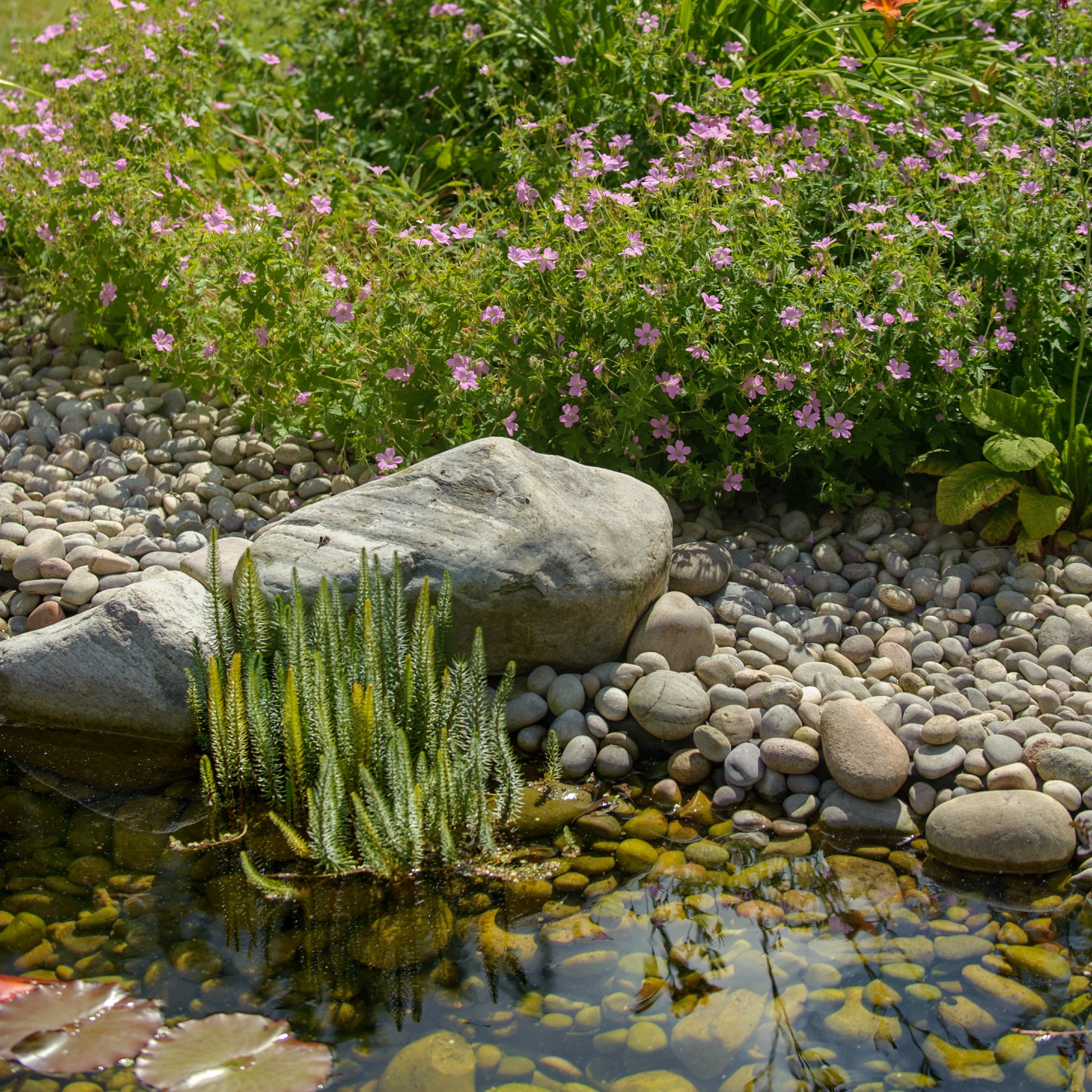
If you mix up the levels in your garden, it’s well worth considering a rain garden. This concept takes advantage of the excess water in your garden and uses it to improve your outside space rather than ruin it.
To make a rain garden, you need to create a bowl-shaped depression that will capture the rainwater and absorb it in a way that will water your garden from below. There’s an art to this, though.
Ted says, ‘The key is to get beneath the topsoil, which, for large parts of the UK where flooding is an issue, is dense clay. You’ve got to find a way to get the water through to the subsoil layer quickly. This might mean replacing your topsoil or creating “sinks” in your garden: deep trenches where the water can naturally collect, usually at the lowest point of the garden.’
‘Fill these trenches with hardcore and sand, and then they can be dressed with whatever surfacing you prefer. These trenches then act as natural soak-aways that store and release the water to the lower ground layers.’
Just remember that you need to choose the right place for a rain garden for it to be an effective way to floodproof your garden.
5. Incorporate extra drainage systems
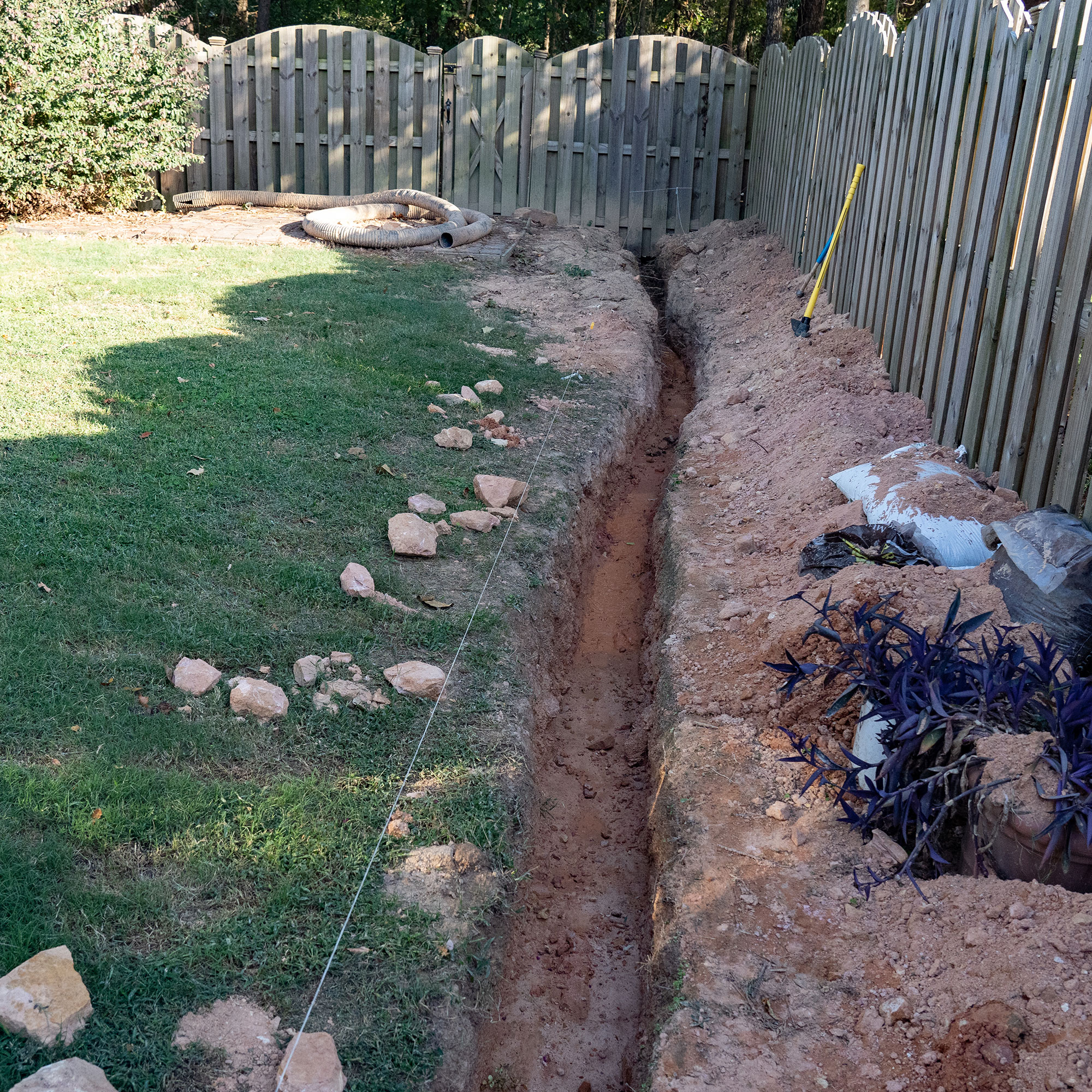
One of the most effective ways to both dry out a flooded garden and flood-proof your garden is to incorporate extra drainage systems designed specifically for this purpose.
This could be as simple as extra-wide guttering to prevent roof overflow or something a little more specific, like a French drain or a green roof. Whatever the case, there’s a high chance that you’ll need to enlist professionals for these types of jobs.
‘If your surfaces are solid but lack drainage, you need to improve the surface water drainage,’ says Ted. ‘This may include incorporating drainage channels which need to connect to either an underground, mains storm water drain or an underground soak-away/attenuation crate.’
‘These crates can either release the water immediately to the ground layer or act as a temporary storage tank which then releases the rainwater later once the ground is less saturated.’
So, if you’re considering flood-proofing systems like this, it’s best to do your own research and seek professional advice.
6. Collect as much rain as possible

Last but not least, always try and collect as much of the rain as possible when you’re trying to flood-proof your garden. After all, if the rainwater is being collected in water butts, it won’t hit the ground and cause more significant issues.
However, there are many other ways to collect and harvest rainwater, from using rain catchers to old barrels, rain chains, and even a permanent pond.
In our eyes, you can never have too many water-collecting items in your garden, but it’s a good idea to check on them now and then to ensure they don’t overflow. And if you’re worried they’ll ruin your garden aesthetic, there are still many ways to make a water butt look attractive.
Then, you have the added bonus of using this water when the rain eases up and the sun finally shines.
FAQs
Why does my garden flood?
For the most part, flooding is caused by poor soil quality. If you don’t have well-draining soil, the water will simply pool on the surface and result in waterlogging. And if the rain continues without giving your soil a chance to dry out, it’ll just get worse and cause flooding.
However, even the best soil can’t always cope with torrential downpours - and with our weather patterns changing, our gardens are bound to suffer more with flooding as the years go by.
Does putting sand on grass help drainage?
In some cases, yes. Sand can help to improve drainage as sand is much better at absorbing water than clay-filled lawns. And while some people do find success in top-dressing their lawn with sand, it’s important to note that it’s not a long-term solution.
If you’re going to put sand on top of grass, you should ensure that you aerate it first so that the granules can make their way into the holes.
If you want to solve drainage issues in the long term, it’s best to confront them head-on and focus on flood-proofing your garden instead.
Even if you just implement one of these ideas, you'll be on your way to flood-proofing your garden.

Lauren Bradbury has been the Content Editor for the House Manual section since January 2025 but worked with the team as a freelancer for a year and a half before that. She graduated with a Bachelor’s degree in English and Creative Writing from the University of Chichester in 2016. Then, she dipped her toe into the world of content writing, primarily focusing on home content. After years of agency work, she decided to take the plunge and become a full-time freelancer for online publications, including Real Homes and Ideal Home, before taking on this permanent role. Now, she spends her days searching for the best decluttering and cleaning hacks and creating handy how-to guides for homeowners and renters alike, as well as testing vacuums as part of her role as the Ideal Home Certified Expert in Training on Vacuums, having spent over 110 hours testing different vacuum models to date!
